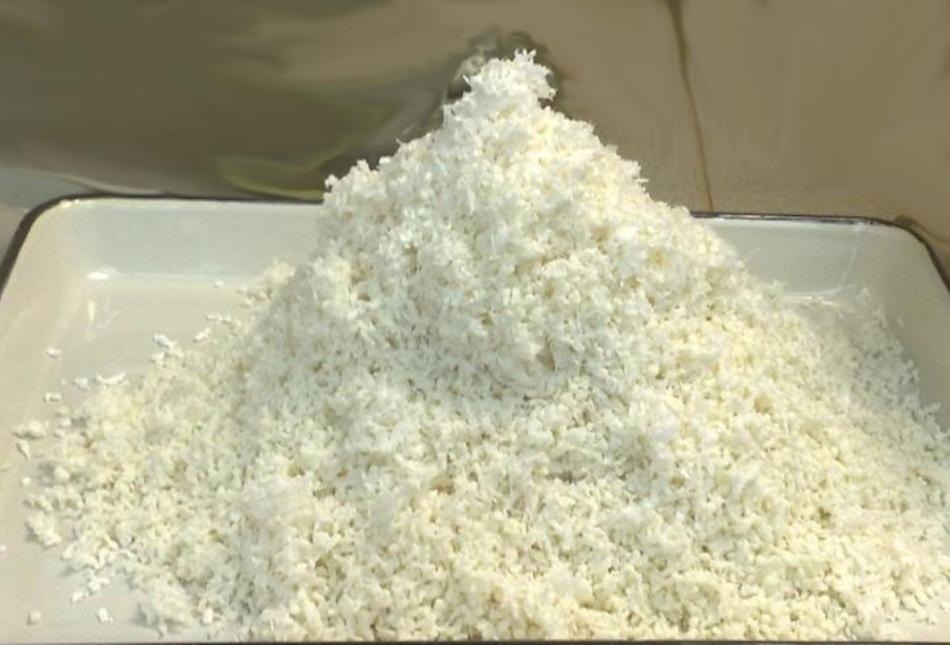Jan 23 2019
Carbon fiber is regarded as a crucial structural material of the 21st century. The material exhibits high strength, which is not substandard to metal alloys, and is also characterized by high oxidative stability and low specific weight.
 It can be used to produce carbon fiber with new improved characteristics. (Image credit: Lobachevsky University)
It can be used to produce carbon fiber with new improved characteristics. (Image credit: Lobachevsky University)
As a result, carbon fiber has become an essential material in the shipbuilding, airspace, sports, construction, and medical industries, and also in other high-tech industry sectors.
Carbon fibers are mainly produced through heat treatment of artificial fibers acquired from acrylonitrile-based polymers. Both the quality and strength characteristics of the finished carbon fiber considerably rely on the molecular weight characteristics and composition of the polymer raw materials, that is, precursors from which the carbon fiber is extruded. Hence, when it comes to synthesizing precursors for carbon fibers, the most significant tasks are to look for novel compositions for copolymerization and to devise effective polymerization techniques that make it possible to regulate the molecular weight of the samples acquired.
In current synthetic chemistry of polymers, one of the recent achievements is the development of techniques for controlled radical polymerization or reversible-deactivation radical polymerization. The benefits include the potential to regulate the molecular weight value of the polymers acquired by changing the ratio between the monomer and the initiator, and also the concurrent growth of fragment-by-fragment chains which leads to a narrow molecular weight distribution.
Ivan Grishin, head of the research laboratory for organic synthesis and radical processes at Lobachevsky University, stated that the study performed by UNN researchers was specifically aimed to devise a novel technique for creating acrylonitrile copolymer, which helps in obtaining a precursor for high-quality carbon fibers exhibiting high elastic modulus and strength. In order to achieve these acrylonitrile copolymers, a technique of controlled atom transfer radical polymerization (ATRP) was applied for the first time, using copper bromide as a catalyst. Owing to the fragment-by-fragment chain growth and the high initiation efficiency, this technique helps in achieving narrowly dispersed copolymers that have specified molecular weights.
As a result of our experiments, we obtained samples with molecular weights of more than 70 kDa and a narrow molecular weight distribution, which meets the requirements for copolymers to be processed into high-strength carbon fibers. The important advantages of the proposed method are the use of very low concentrations of the catalyst (at the level of hundredths of a percent), as well as the high rate of the process, which is due to the use of glucose as an activator.
Ivan Grishin, Head, Research Laboratory for Organic Synthesis and Radical Processes, Lobachevsky University.
During the course of the study, copolymers featuring a high degree of compositional homogeneity and also a predetermined composition and molecular weight value were obtained. The influence of comonomers on sample behavior in the course of their oxidative stabilization was examined. It was demonstrated that with the help of the proposed composition based on three monomers—that is, acrylonitrile, dimethyl itaconate, and methyl acrylate—a considerable reduction of the exothermic effect could be achieved during the process of precursor oxidative stabilization, which has a satisfactory effect on the mechanical characteristics of the ensuing carbon fiber.
Therefore, the copolymerization technique and the composition recommended by UNN researchers can be effectively used for creating acrylonitrile copolymers that can particularly act as precursors for high-strength carbon fibers.